
Sejarah kimia
The earliest record of man's interest in chemistry was approximately 3,000 BC, in the fertile crescent. Secepat-cepatnya merekam manusia minat kimia di sekitar 3000 SM, di bulan sabit subur. At that time, chemistry was more an art than a science. Pada saat itu, kimia adalah lebih dari sekedar sebuah seni sains. Tablets record the first known chemists as women who manufactured perfumes from various substances. Tablet mencatat apotek pertama dikenal sebagai perempuan yang diproduksi parfum dari berbagai bahan. Ancient Egyptians produced certain compounds such as those used in mummification. Mesir kuno tertentu yang dihasilkan memanjang seperti yang digunakan dalam hal membuat mumi. By 1000 BC, chemical arts included the smelting of metals and the making of drugs, dyes, iron, and bronze. Dengan 1000 SM, kimia seni meliputi peleburan metal dan pembuatan obat-obatan, Pewarna, besi, dan perunggu. Iron making was also introduced and refinement of lead and mercury was performed. Membuat besi juga diperkenalkan dan penyempurnaan dari memimpin dan suhu dilakukan. The physical properties of some metals such as copper, zinc, silver, and gold were understood. Fisik beberapa properti dari logam seperti tembaga, seng, perak, dan emas yang dipahami. Many groups of people contributed to these developments--among them were ancient Egyptians, Greeks, Hebrews, Chinese, and Indians. Banyak orang menyumbang kepada perkembangan tersebut - di antara mereka adalah orang Mesir kuno, Yunani, Ibrani, Cina, dan India.
Alchemy
It was during this time that the roots of alchemy grew. Ia selama ini bahwa akar Alchemy tumbuh. The Greeks of Egypt are regarded as the forefathers of attempts to change valueless metals into metals of greater value (eg iron into gold). Orang-orang Yunani Mesir dianggap sebagai forefathers dari upaya untuk mengubah harga logam ke logam yang lebih besar dari nilai (misalnya besi menjadi emas). In the fourth century BC, Zosimos the Greek described a substance called Xerion, a metal that supposedly turned other metals into gold. Pada abad keempat SM, Zosimos Yunani dijelaskan substansi yang disebut Xerion, metal yang diduga menjadi logam lain menjadi emas. One needed to add a little dab of Xerion to a pile of metal and after two hundred years, the metal would have become gold. Satu dibutuhkan untuk menambahkan colek sedikit dari Xerion ke timbunan dari logam dan setelah dua ratus tahun, yang akan menjadi logam emas.
This was the extent of the world's knowledge on chemistry. Sejauh ini dari dunia pengetahuan tentang kimia. In Europe, it remained so well into the Middle Ages (400-1500 CE). Di Eropa, tinggal sangat baik ke dalam Abad Pertengahan (400-1500 TM).
The Coming of Islam Kedatangan Islam
Yet at that time, a new empire was forming. Namun pada waktu itu, yang telah membentuk kerajaan baru. Islam was spreading among the people of Arabia. Islam tersebar di kalangan orang Arab. At 632 CE when Prophet Muhammad, Sall-Allahu alayhi wa sallam, died, nearly all of Arabia had become Muslim. Pada 632 Masehi ketika Nabi Muhammad, Sall-Allahu e, meninggal, hampir semua orang Arab telah menjadi Muslim. Islam had raised these people from ignorance and darkness into light. Islam telah dibangkitkan orang-orang ini dari kebodohan dan kegelapan menjadi terang. The Muslims started to become the most advanced civilization of that time. Muslim mulai menjadi yang paling canggih dari peradaban saat itu.
Though Greeks are shown as wise people who had spectacular achievements in science, Muslims are portrayed as alchemists and transmitters of Greek "wisdom", and Western scientists are shown as the real founders of chemistry, the truth is actually the opposite. Walaupun Yunani akan ditampilkan sebagai orang bijaksana yang spektakuler pencapaian dalam sains, kaum muslimin, potret sebagai alchemists dan pemancar dari Yunani "hikmat", dan ilmuwan Barat ditampilkan sebagai pendiri kimia nyata, yang sebenarnya adalah kebenaran yang berlawanan. It is true that Muslims translated many books and writings of the ancients. Memang benar Muslim diterjemahkan banyak buku dan tulisan orang dahulu. However, Muslims soon realized that in the field of chemistry the ancients, mainly being alchemists, dealt primarily with speculation and mystery. Chemistry was not a science before the Muslims. Namun, Muslim segera menyadari bahwa di bidang kimia yang dahulu, terutama yang alchemists, terutama ditangani dengan spekulasi dan misteri. Kimia juga tidak ilmu sebelum Muslim. The Muslims invented the scientific method and used it in their research tremendously. Muslim jadian sains dan metode yang digunakan dalam penelitian mereka sangat tajam. The historian Briffault's book, Making of Humanity, has been quoted in Dr. K Ajram's book, The Miracle of Islam Science: "Investigation, accumulation of positive knowledge, minute methods of science and prolonged observation were alien to Greek temperament. These were introduced to Europe by the Arabs. European science owes its existence to the Arabs." Para sejarawan Briffault buku, Pembuatan Kemanusiaan, telah dikutip dalam Dr K Ajram buku, The Miracle Sains Islam: "Penyidikan, akumulasi dari pengetahuan positif, menit metode ilmu pengetahuan dan pengamatan yang lama untuk alien Yunani perangai. Ini adalah untuk memperkenalkan Eropa oleh Arab. Sains Eropa owes keberadaannya ke Arab. " Will Durant notes that Muslims "introduced precise observation, controlled experiment, and careful records." Will Durant catatan bahwa Muslim "diperkenalkan tepat pengamatan, percobaan dikontrol, dan catatan hati-hati."
Work of Muslims Kerja Muslim
Muslims were not alchemists, but rather they were the world's first true chemists. Muslim tidak alchemists, tetapi mereka yang pertama di dunia benar apotek. They produced a variety of compounds useful for the development and advancement of science, culture, industry, and civilization. Mereka menghasilkan berbagai memanjang berguna untuk pembangunan dan kemajuan ilmu pengetahuan, budaya, industri, dan peradaban. Muslims invented and/or perfected the processes of distillation, sublimation, crystallization, oxidation, and precipitation. Muslim jadian dan / atau menyempurnakan proses penyulingan, sublimasi, kristalisasi, oksidasi, dan hujan. They discovered the process of calcination, which is used to reduce substances to a powdered form. Mereka menemukan proses proses mengapur, yang digunakan untuk mengurangi zat ke bentuk bubuk.
Muslims also discovered many elements with their specific weights. Al-Jabr (d. 815?) discovered 19 elements along with their specific weights. Muslim juga menemukan banyak elemen dengan bobot tertentu. Al-Jabr (d. 815?) Menemukan 19 beserta unsur bobot tertentu. They also were the first to accurately divide the elements. Mereka juga yang pertama akurat untuk membahagikan unsur. Muslims distinguished between metals and alloys, noting that alloys were only mixtures and not true elements. Muslim dibedakan antara logam dan alloy, bahwa hanya alloy campuran dan unsur tidak benar.
They originated the synthesis of numerous crucial substances that are essential to the development of chemical sciences. Mereka berasal dari berbagai sintesis penting adalah zat yang sangat penting dalam pengembangan ilmu kimia. The acid-base principal of chemistry was entirely their development. Asam-dasar yang Kepala kimia telah mereka seluruhnya pembangunan. The pH scale was their invention. Skala pH adalah temuan mereka. Evidence is found in the fact that the word alkali originated from the Arabic word al-kili. Bukti yang ditemukan dalam kenyataan bahwa kata lindi berasal dari kata Arab al-kili. They invented the concept of solutions regarding the solubility or insolubility of substances. Mereka jadian konsep solusi mengenai hal tdk dpt kelarutan atau dari zat.
Industrial Chemistry Industri Kimia
As industrial chemists, Muslims used advanced techniques for extracting minerals and metals. Sebagai industri apotek, Muslim teknik lanjutan digunakan untuk pengambilan mineral dan logam. They perfected glass making and introduced the technology for coloring it with metal oxides. Mereka membuat dan menyempurnakan kaca memperkenalkan teknologi untuk pewarnaan dengan logam oxides. They invented crystal making. Mereka membuat masakan kristal. They introduced and perfected steel making. Mereka diperkenalkan dan menyempurnakan pembuatan baja. They produced dyes and used them in tiles, woodworking, and clothing. Mereka Pewarna diproduksi dan digunakan di tiles, woodworking, dan pakaian. They produced a variety of plasters, glazes, and other building compounds. Muslim Spain had roads paved with cement instead of stones and had the world's first street lights. Mereka menghasilkan berbagai plasters, glazes, dan bangunan lain memanjang. Muslim Spanyol telah diaspal jalan dengan semen bukan dari batu dan telah pertama di dunia lampu jalan.
Instruments Instrumen
Muslims invented and/or widely used many chemical instruments that are used until now. Muslim jadian dan / atau digunakan secara luas banyak instrumen kimia yang digunakan sampai sekarang. They used burners, water baths, bellows, crucibles, distillation apparatuses, scales and weights, beakers, filters, flasks, phials, test tubes, etc. Mereka bakal digunakan, air mandi, hembusan, crucibles, penyulingan aparatur, skala dan bobot, beakers, filter, flasks, phials, uji tabung, dll
Production of Paper Produksi Kertas
Muslims also perfected the production of paper. Muslim juga menyempurnakan produksi kertas. This accomplishment is often attributed to the Chinese. Prestasi ini sering dikaitkan dengan Cina. Though it is true that the Chinese produced paper, this was done through a tedious process requiring silk. Walaupun memang benar bahwa orang Cina dihasilkan kertas, ini dilakukan melalui suatu boyak memerlukan proses sutra. It was the Muslims who instituted chemically-aided paper production. Ia adalah Muslim yang teringat kimiawi-aided kertas produksi. The first paper-manufacturing plant in the Muslim World was opened in Baghdad in 794 CE Millions upon millions of books were published wherever this invention arrived. Pertama kertas-tanaman manufaktur di Dunia Islam dibuka di Baghdad dalam TM 794 Juta kepada jutaan buku diterbitkan dimanapun temuan ini tiba. In 891 CE, Baghdad had over a hundred booksellers. Dalam 891 TM, Bagdad telah lebih dari seratus penyalur buku. Most mosques had libraries. Kebanyakan mesjid memiliki perpustakaan. Many cities also had public libraries. Banyak kota juga memiliki perpustakaan umum. Baghdad at the time of the Mongols' invasion had thirty-six libraries. Baghdad pada saat orang Mongol 'invasi telah tiga puluh enam-perpustakaan. Private libraries were innumerable; it was common for rich people to have huge collections of books. Swasta perpustakaan yang banyak sekali; ianya umum untuk orang-orang kaya untuk memiliki koleksi buku besar. Princes, according to Will Durant, "in the tenth century might own as many books as could be found in all the libraries of Europe combined." Raja, menurut Will Durant, "di abad kesepuluh sendiri mungkin karena banyak buku sebagai dapat ditemukan di semua perpustakaan gabungan dari Eropa."
Slowly but steadily, Europeans became accustomed to the luxury of imported paper from the Muslim world. Perlahan tapi terus, Eropa menjadi terbiasa untuk kemewahan impor kertas dari dunia Muslim. Paper was used in Constantinople by 1100, in Sicily by 1102, in Italy by 1154, in Germany by 1228, and in England by 1309. Kertas digunakan di Konstantinopel dengan 1100, di Sisilia oleh 1102, di Italia oleh 1154, di Jerman dengan 1228, dan di Inggris dengan 1309. The production of the many cheap books by Europeans was only possible after the replacement of parchment and silk paper with this new paper. Produksi dari banyak buku murah oleh Eropa hanya mungkin setelah penggantian perkamen sutra dan kertas dengan kertas baru ini. The Western world slowly rose from the coffins of illiteracy in which it had been sinking. Dunia Barat perlahan bangkit dari coffins dari buta huruf di mana ia telah tenggelam.
Muslims' Writings and Books Muslim 'tulisan dan Buku
Muslims' writings and books spurred and strongly stimulated the development of European chemistry. Muslim 'tulisan dan buku-buku yang didorong dan sangat mendorong perkembangan Eropa kimia. Translated versions of Al-Jabr's works were, according to Mathe, Lavoisier's "bible." Terjemahan versi Al-Jabr karya itu, menurut Mathe, Lavoisier's "Injil." Ar-Razi's (d. 925) booklet, Secret of Secrets, is said to be the first known example of a chemistry lab manual. Ar-Razi's (d. 925) buku kecil, Rahasia dari Rahasia, dikatakan pertama dikenal contoh dari laboratorium kimia manual. Their books were used in many European schools for many centuries. Mereka buku-buku yang banyak digunakan di Eropa untuk sekolah banyak abad. After the Crusades, especially, as returning Western soldiers told fantastic tales of the Muslim World and all the knowledge that was there, Europeans wanted to learn more and their thirst for knowledge grew. Setelah Crusades, khususnya, sebagai prajurit Barat kembali kepada orang-orang yang fantastis Dunia Muslim dan semua pengetahuan yang ada, Eropa ingin mempelajari lebih lanjut dan mereka kehausan pengetahuan untuk berkembang. Many books were translated into European languages. Banyak buku diterjemahkan ke dalam bahasa Eropa. Slowly, the Western World acquired the knowledge of Muslims, and began its Renaissance. Perlahan, Dunia Barat pengetahuan yang diperoleh dari Muslim, dan mulai dengan Renaissance.
Bibliography Bibliografi
Ajram, K. 1992. Ajram, K. 1992. The Miracle of Islamic Science. The Miracle Sains Islam. Knowledge House Publishers. Pengetahuan rumah penerbit.
Durant, Will. Durant, akan mereda. 1950. The Age of Faith. Age Iman. New York: Simon and Schuster. New York: Simon dan Schuster.
| Islam's Contribution to Chemistry | | | |
| Written by www.daily.pk | ||||||||||||||||||||||||||||||||||||||||||||||||||||||||||||||||||||||||||||||||||||||||
| Thursday, 24 July 2008 00:00 | ||||||||||||||||||||||||||||||||||||||||||||||||||||||||||||||||||||||||||||||||||||||||
| Before addressing the subject of Muslim chemistry, however, one crucial matter needs to be raised. It concerns the use of the word Alchemy instead of chemistry. This is another instance of historical corruption fooling so many who have no perception of the depths some scholarship can descend to in order to convey distorted images of aspects of history, such as that of Islamic science. Alchemy, indeed, is a corrupt translation of the Arabic word Chemia (chemistry,) preceded by the article Al (which means: the), and which the Arabs always use (like the French and others for that matter) in front of their subject such as Al-Tib (medicine) al-Riyadiyat (mathematics) etc... If this was applied to other subjects, it would become al-medicine; al-mathematics, al-geography and so on... Only Baron Carra de Vaux had had the presence of mind to pointing to this, however briefly. Somehow al-Chemy should be translated literally The Chemistry and not Alchemy in English; and La Chimie and not l'alchimie in French. The fact that only Westerners translated or dealt with the subject, followed by rather very respectful or shy Muslim scholars means that this corrupt word of al-chemy has remained, and has become the norm.
Al-Qur'an and Chemistry The Surah named IRON is surah no 57 in Al-Qur'an. Relation to Chemical Science: IRON (Fe) 57 is one of 4 STABLE ISOTOPE Visit: Isotopes
Visit : http://wwwrcamnl.wr.usgs.gov/isoig/period/fe_iig.html
There are 29 verses inside surah 57 Relation to Chemical Science: 2957 Is the 3rd ionization energy of IRON Visit:
OR VISIT THIS ONE
In Arabic, IRON called HADIID. Relation to Chemical Science: 26 Is ATOMIC NUMBER of the IRON Visit:
IRON (HADIID) is surah no 57 57 - 26 = 31 Relation to Chemical Science: 31 Is the NUMBERS of NEUTRON for Fe57
The word IRON found in verse number 25 in surah 57. 29 - 25 = 4 Relation to Chemical Science: 4 Is the ENERGY LEVELS of IRON( Fe ) There are 4 STABLE ISOTOPES of IRON( Fe )
Remember that the WORDS in surah 57 is totally: Say that 57 is Surah Number and one of 4 STABLE ISOTOPE, Letters (with hamza) in surah 57 is totally: 2505 - 574 = 19 31 19 Is the MAJOR CONCEPT of Al-Qur'an, Islam and the UNIVERSE.
WORDS in surah 57 is totally: Atomic Mass Average: 55.847 55847 574 = 19 x 2939346.0000
http://environmentalchemistry.com/yogi/periodic/Fe.html Melting Point: 1808 K, 1535°C, 2795°F WORDS in surah 57 is totally: 574 1808 1535 2795 = 19 x 30220042913305.0000
http://environmentalchemistry.com/yogi/periodic/Fe.html Boiling Point: 3023K, 2750°C, 4982°F 3023 + 2750 + 4982 =10755 1808 + 1535 + 2795 = 6138 Letters (with hamza) in surah 57 is totally: 10755 2505 6138 = 19 x 56606581902.0000
Boiling Point: 3023K- Melting Point: 1808K 3023 2505 1808 = 19 x 15911844832.0000
574 WORDS and 2505 Letters in surah 57 Boiling Point: 2750°C- Melting Point: 1535°C 574 2505 2750 1535 = 19 x 30223711973765.0000
19 and Chemistry http://wwwrcamnl.wr.usgs.gov/isoig/period/fe_iig.html So 4 Stable isotopes are: 54, 56,57,58 54565758 = 19 x 2871882.0000
ATOMIC MASS of Fe57 569354 = 19 x 29966.0000 Noteworthy:
Found here: Number of Energy Levels: 4 First Energy Level: 2 Tabel
http://www.chemicalelements.com/elements/fe.html Boiling Point: 2750.0 °C 2750 - 1535 = 1215 Put the value of 4 energy level after the number 1215 2 8 14 2 = 19 x 6396218.0000
http://environmentalchemistry.com/yogi/periodic/Fe.html Boiling Point: 3023K, 2750°C, 4982°F 3023 + 2750 + 4982 =10755 1808 + 1535 + 2795 = 6138 10755 - 6138 = 4617 = 19 x 243.0000
This one is interesting. 26 Is ATOMIC NUMBER of the IRON Boiling Point: 3023K, 2750°C, 4982°F 26 3023 2750 4982 = 19 x 1384333026578.0000 Melting Point: 1808K, 1535°C, 2795°F 1808 1535 2795 26 = 19 x 951659751554.0000
http://environmentalchemistry.com/yogi/periodic/Fe.html Atomic Number: 26 26 + 8 + 4 = 38 = 19 x 2.0000
http://environmentalchemistry.com/yogi/periodic/Fe.html Heat of Vaporization: 349.6 kJ/mol 3496 = 19 x 184.0000
http://environmentalchemistry.com/yogi/periodic/Fe.html Ionization Potential
| ||||||||||||||||||||||||||||||||||||||||||||||||||||||||||||||||||||||||||||||||||||||||
Mau Gambar Tabel Periodik Unsur?????
Neh copy aza disini!!!!


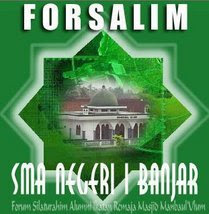



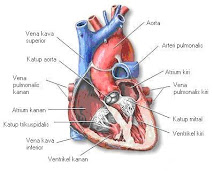
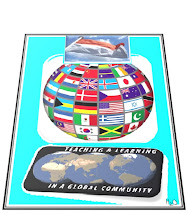







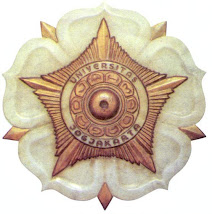
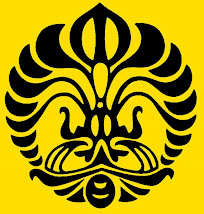




Tidak ada komentar:
Posting Komentar